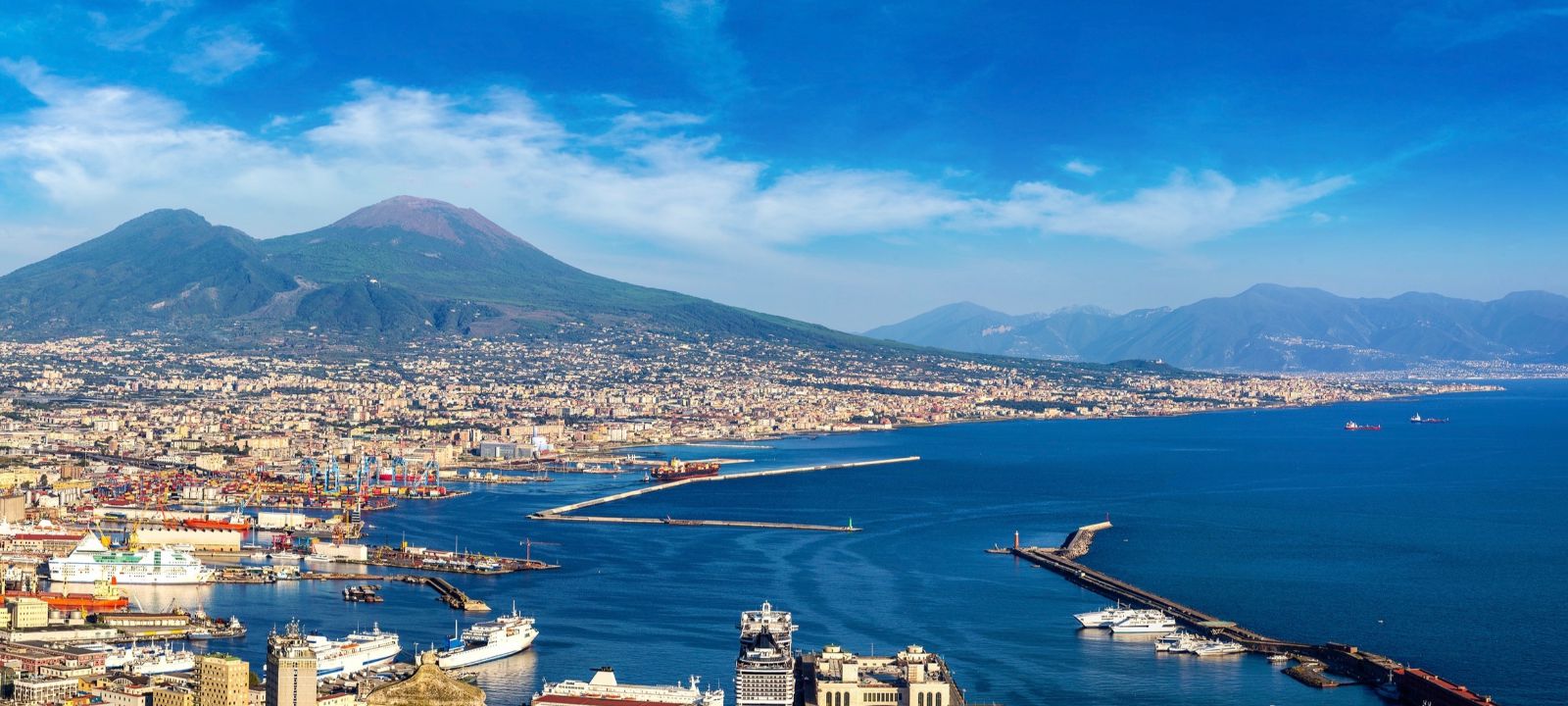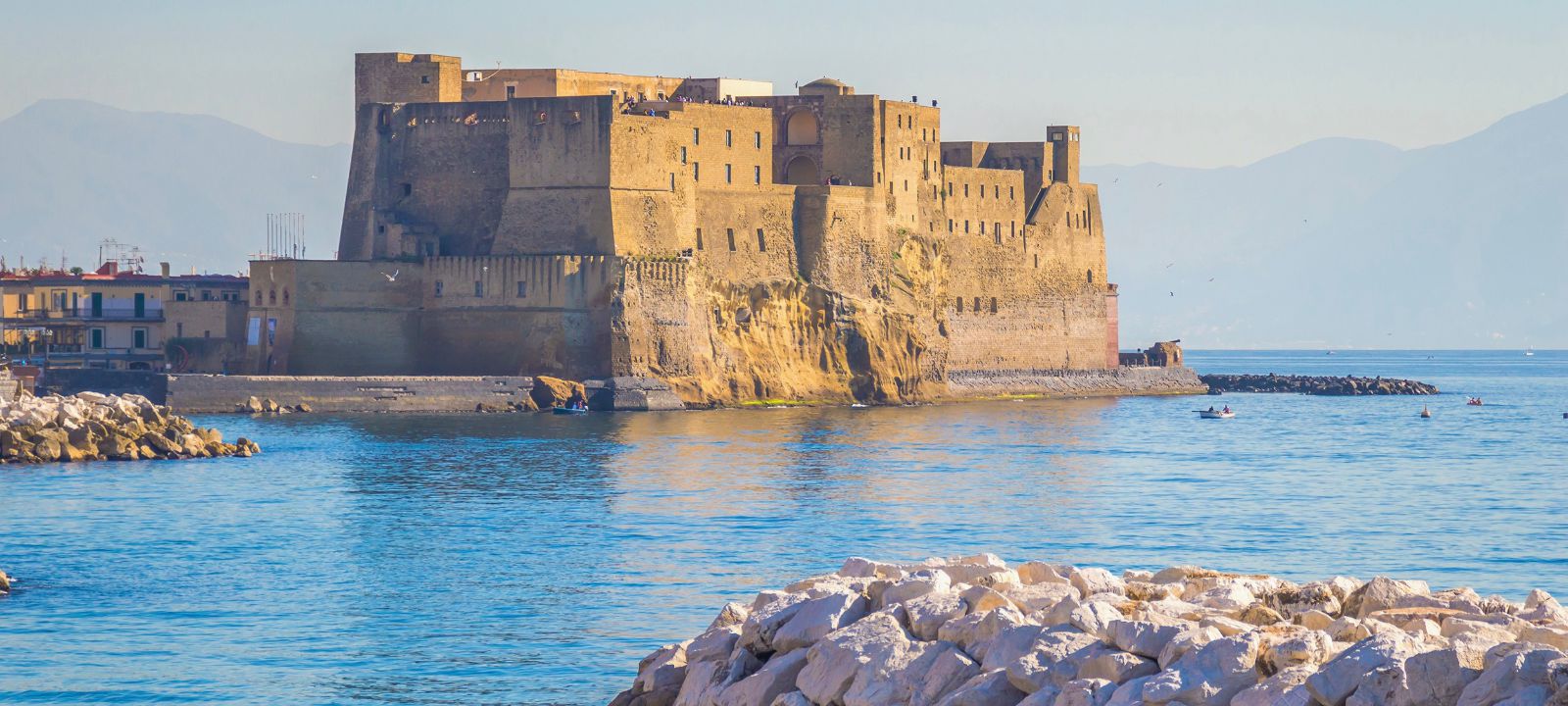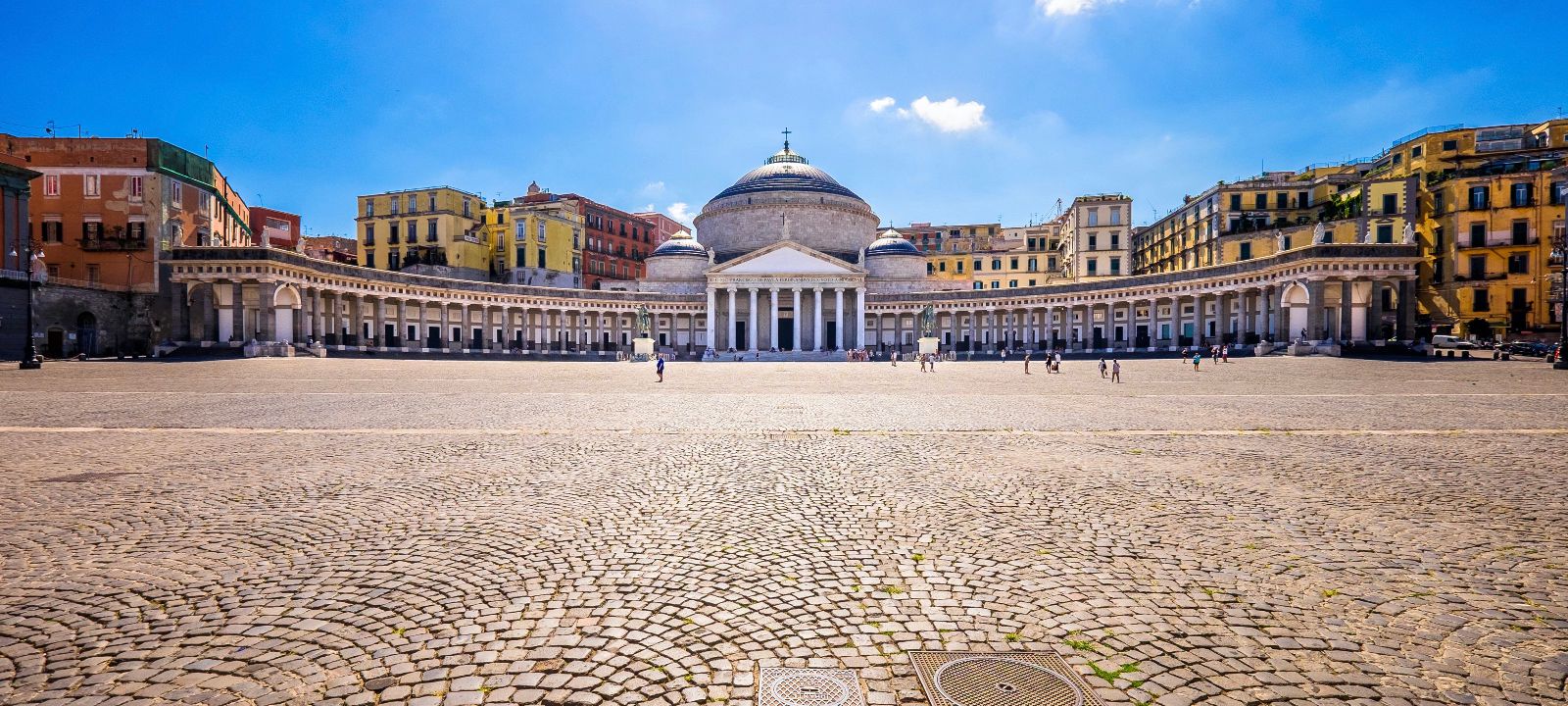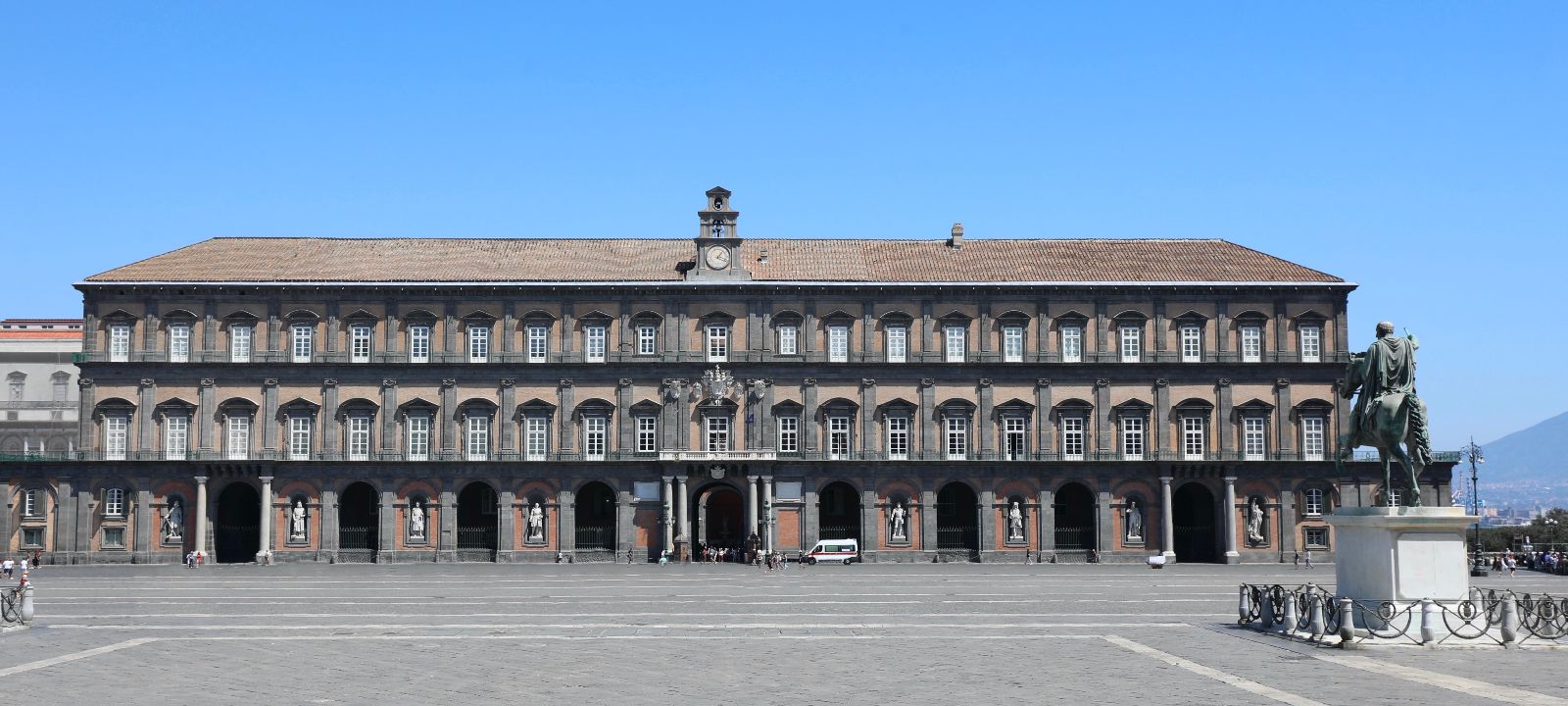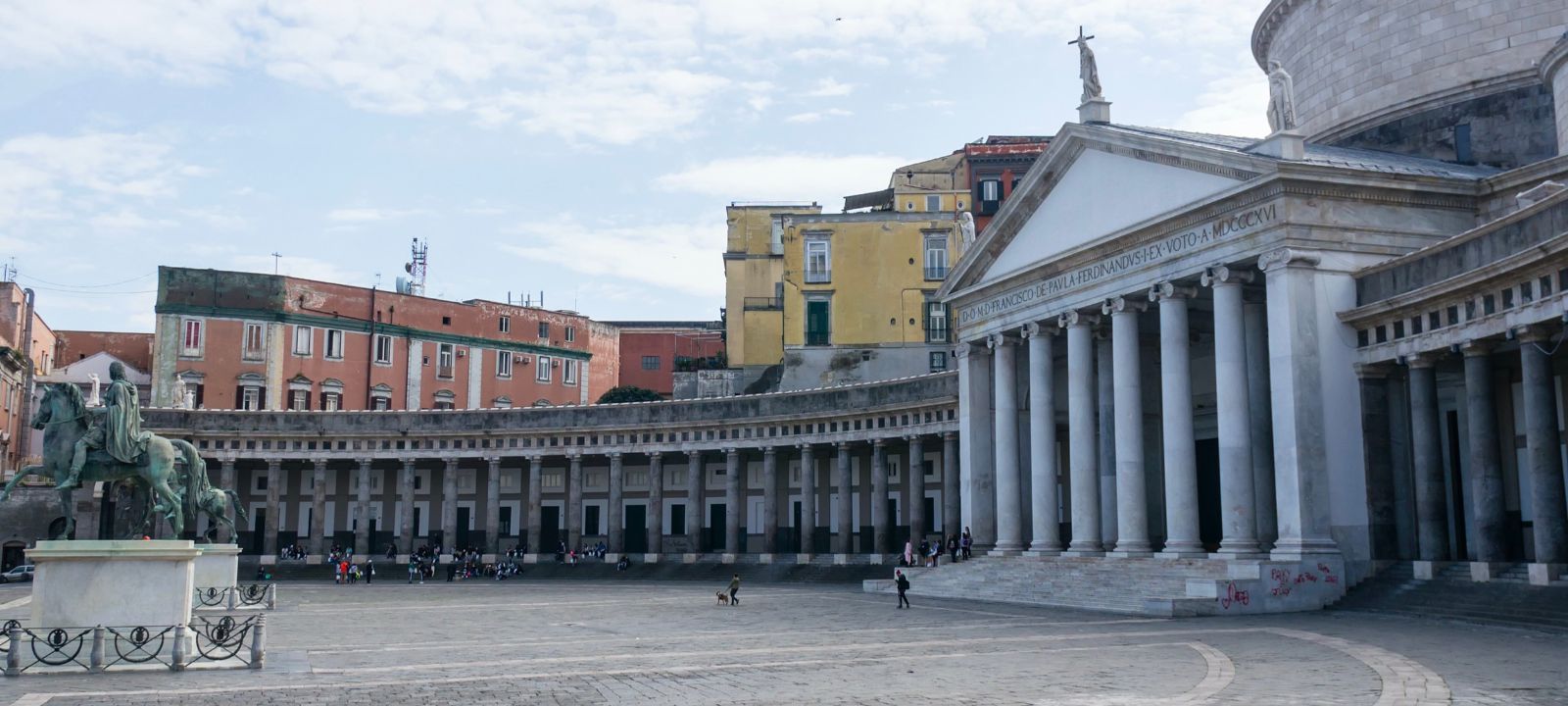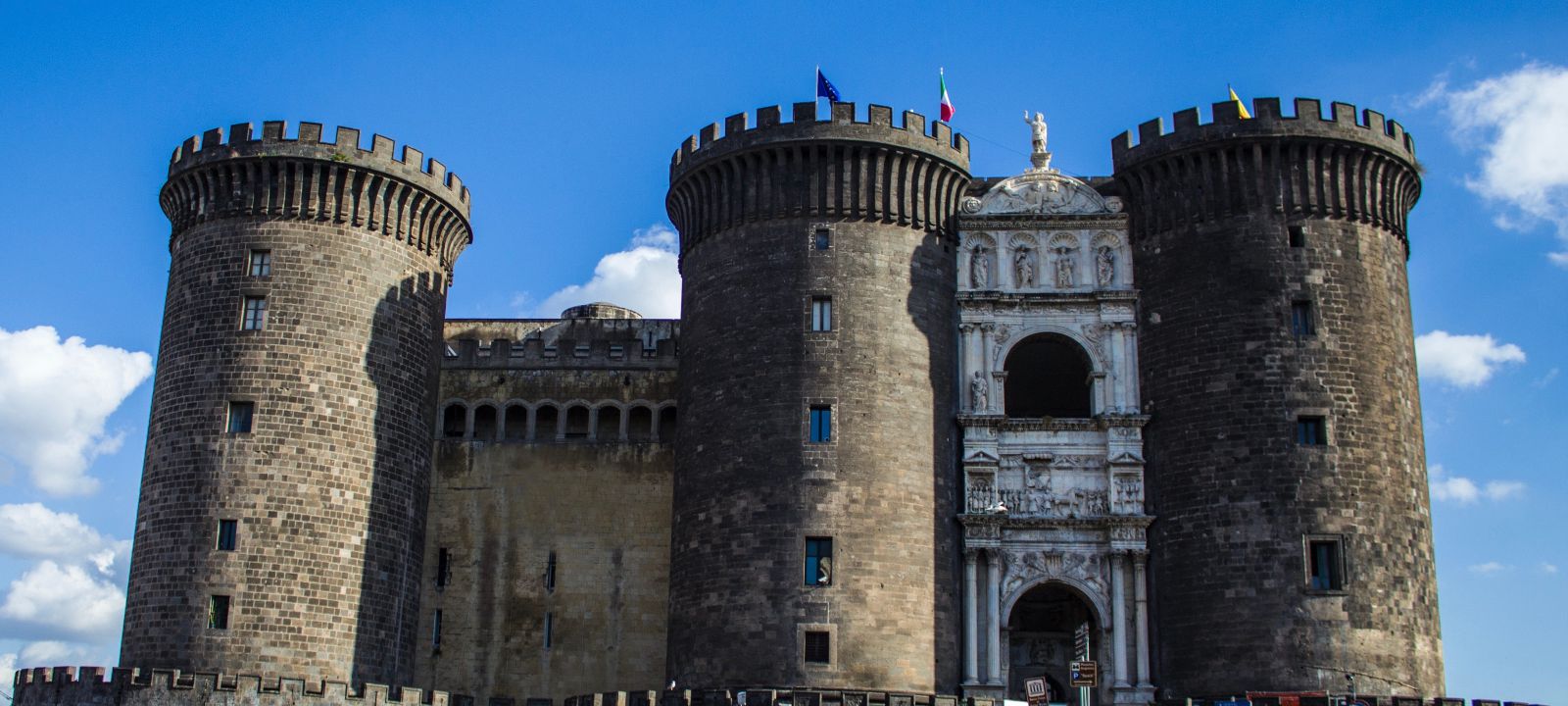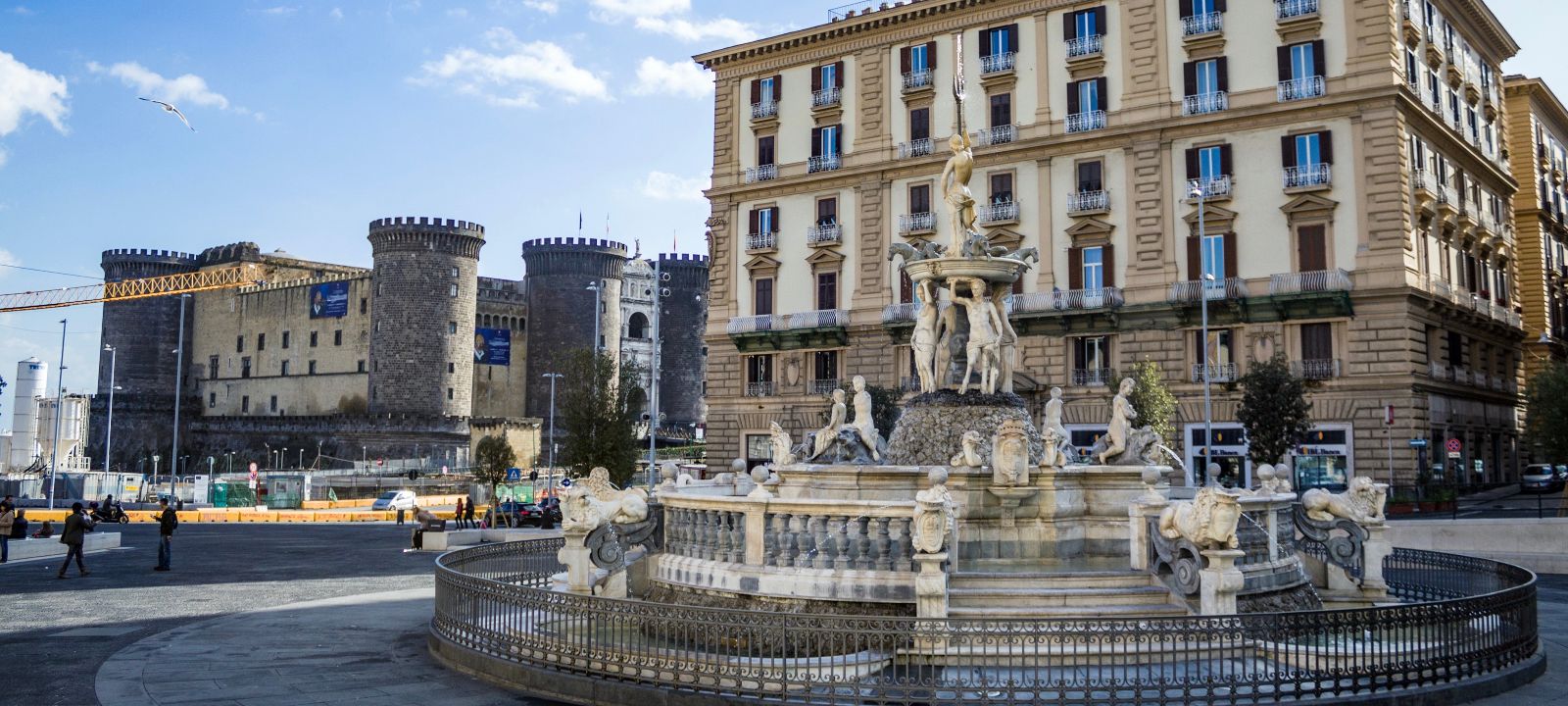Naples
Naples is a kaleidoscope. A continuous alternation of lights and shadows. A frenetic variation of colors that fuels the dreamy fantasy of a city that gives strong emotions.
Naples is a kaleidoscope. A continuous alternation of lights and shadows. A frenetic variation of colors that fuels the dreamy fantasy of a city that gives strong emotions.
To realize this, just take a walk to Spaccanapoli, the road that cuts the city in a straight line and that literally divides the historic center in two. Here, among basilicas, pizzerias, balconies and the street vendors’ songs, it clearly emerges the essence of the city.
Along the Spaccanapoli route, three jewels are revealed in a single glance:
- the Church of Gesù Nuovo, shrouded in mystery: each of the stones of the facade are decorated with graffiti. It was believed that the piperno rock masters knew a key to establish the energy transmitted to the building.
- the Obelisk of the Immaculate Conception and the Monastery of Santa Chiara, made famous by its majolica covered cloister pillars.
- Close by there is the San Severo Chapel, housing the Veiled Christ by Giuseppe Sanmartino. It is difficult not to be entranced in front of this sculpture, in which Christ is represented covered by a transparent veil, perfectly adherent to his body. The effect is such that, at the time, the work was considered the result of a prodigious spell over the marbling. On the other hand, the chapel was commissioned by Raimondo di Sangro, who had a reputation as an alchemist and daring experimenter. He also commissioned of the "Anatomical Machines" displayed in basement: two skeletons are exhibited with their arteriovenous system almost perfectly intact.
The beauty of Naples also lies in a rich tradition of craftsmanship excellence: San Gregorio Armeno, the Nativities street, is one of the most famous streets in Naples where “presepe” art is king. Neapolitan inspiration, imagination and irony are reflected in the “shepherds”, the figures who also depict famous people.
From the deep belly of Naples, tufo rock was obtained to build the city above. The city below, therefore, hides a dense intrigue of ravines, caves and tunnels that tell a parallel story to the life of Naples on the surface. The Underground Naples served the Neapolitans in many ways: from a refuge during bombing to a source of water and a place where criminals used to hid.
The Cathedral of San Gennaro is one of the largest basilicas in the city. The Gothic cathedral sits above fascinating catacombs containing archaeological remains of ancient Greek, Roman and early Christian civilizations. The most famous Neapolitan mystery in the world is undoubtedly the ampoule kept in the Cathedral and which is said to contain the blood of San Gennaro. The peculiarity of this relic is that three times a year the substance changes from solid to liquid, a phenomenon considered prodigious by the faithful. The chapel is also connected to the Museum of the Treasure of San Gennaro which displays paintings, statues, busts, jewels and precious fabrics that kings and queens, nobles and common people brought as a gift to the saint over the years.
The Neapolitans invented gastronomic globalization.
In addition to pizza and spaghetti, Neapolitan gastronomy offers an infinite variety of dishes based on fresh local ingredients: buffalo mozzarella, potato croquettes, eggplant parmigiana, or typical seafood dishes such as "cuoppo di mare" , luciana-style octopus and spaghetti with clams.
Not to mention the typical Neapolitan sweets that you can taste in the alleys of the historic center: you will find the best pastry shops where you can eat pastiera, sfogliatelle, babbá and the snowflake.
In Naples, coffee is a meaningful ritual. Caffè Gambrinus, is the temple of coffee excellence, always frequented by the intellectuals of the Campania region’s capital.
In Forcella, in the heart of Naples, Pizzeria Da Michele is one of the oldest and most renowned in the world.
Tours:
- MANN National Archaeological Museum
- National Museum of Capodimonte
- Royal Palace of Naples
- Charterhouse of San Martino
- PAN Palace of the Arts of Naples
- MADRE Donna Regina Museum of Contemporary Art
- Umberto I Gallery
- San Carlo Theater
- The Art stations
- Castles
- Castel dell’Ovo
- Maschio Angioino
- Castel Sant’Elmo
- Underground Naples
- Catacombs of San Gennaro
- Bourbonic Gallery
- Catacombs of San Gaudosio
Walks:
- Spanish Quarters
- Caracciolo Promenade
- Via dei Tribunali
- Via Toledo
- Sanita’ District
- Vomero
How to get around.
By sea:
The Sorrento-Naples route is currently operated by 2 ferry companies, NLG and Alilauro.
The route is 25 km (14 nautical miles) long, and the crossing takes approximately 40 min.
We recommend purchasing tickets online in advance.
The most convenient way to reach the central station of Piazza Garibaldi from the port is by taxi, or by underground Line 1 (Piazza Municipio or Università).
By train:
The Circumvesuviana connects Sorrento with Naples Piazza Garibaldi, with departures every 30 minutes. Tickets can’t be purchased online. You can buy them at newsstands or at the ticket office in the stations.
Our concierge is at your disposal to organize a private transfer.



